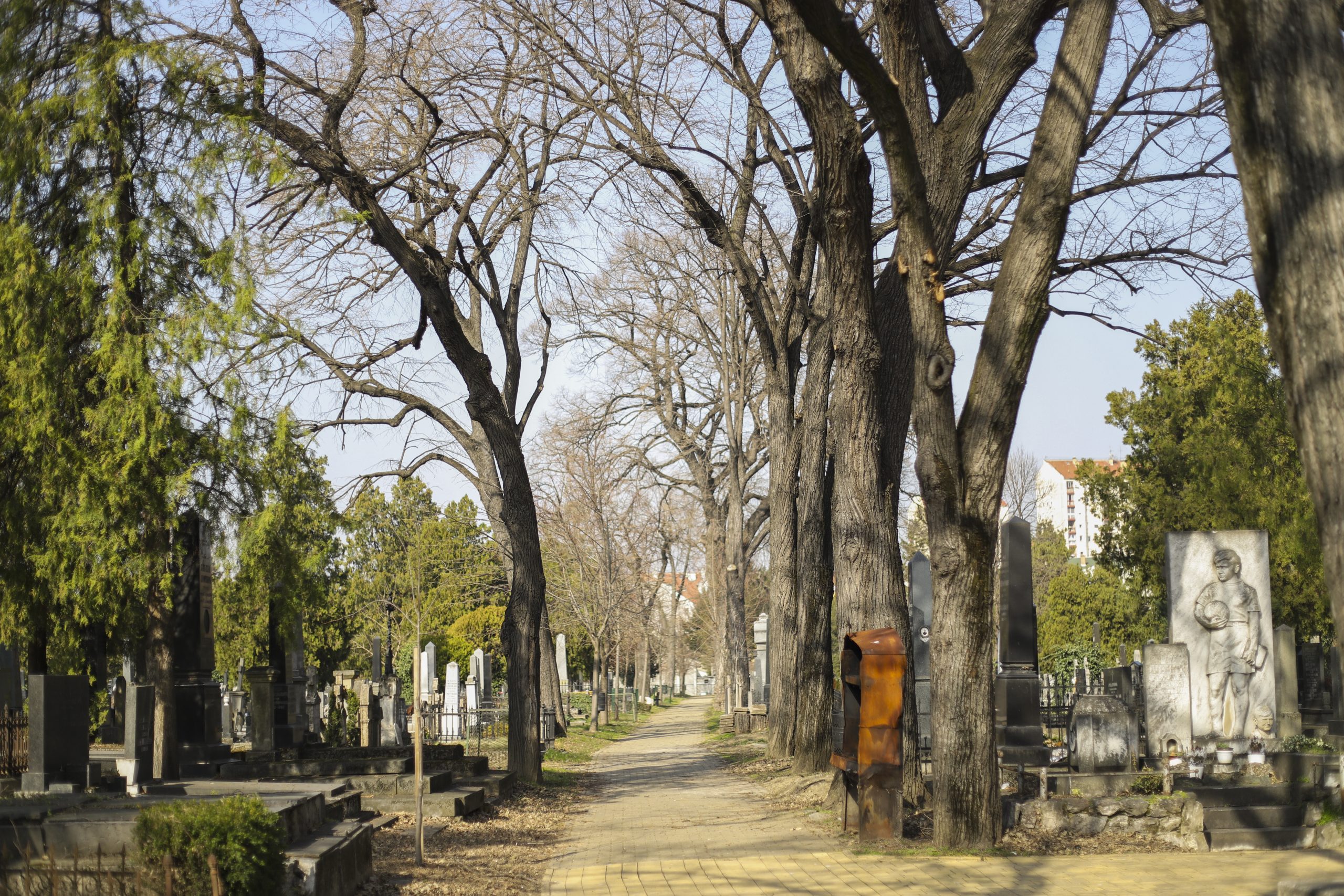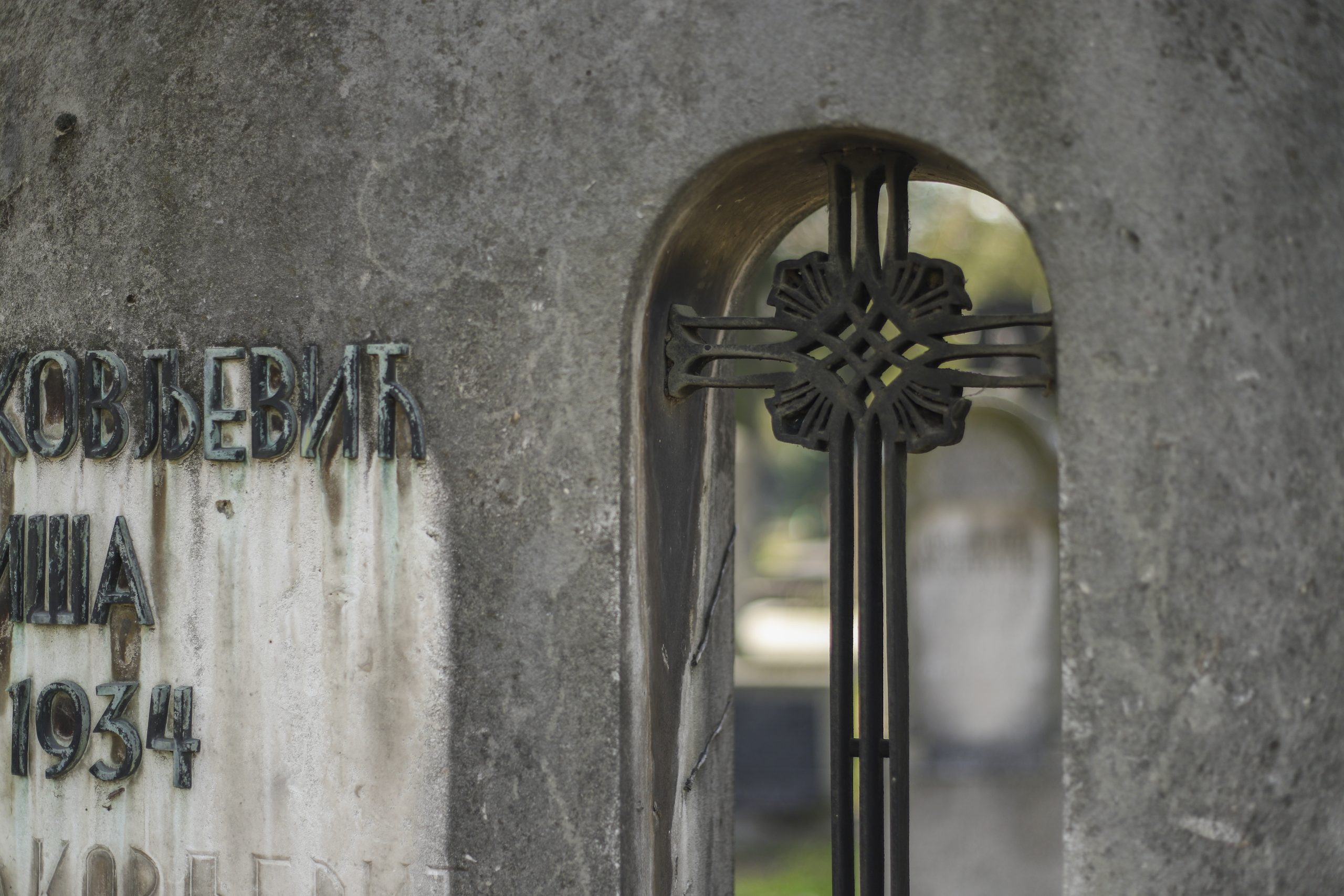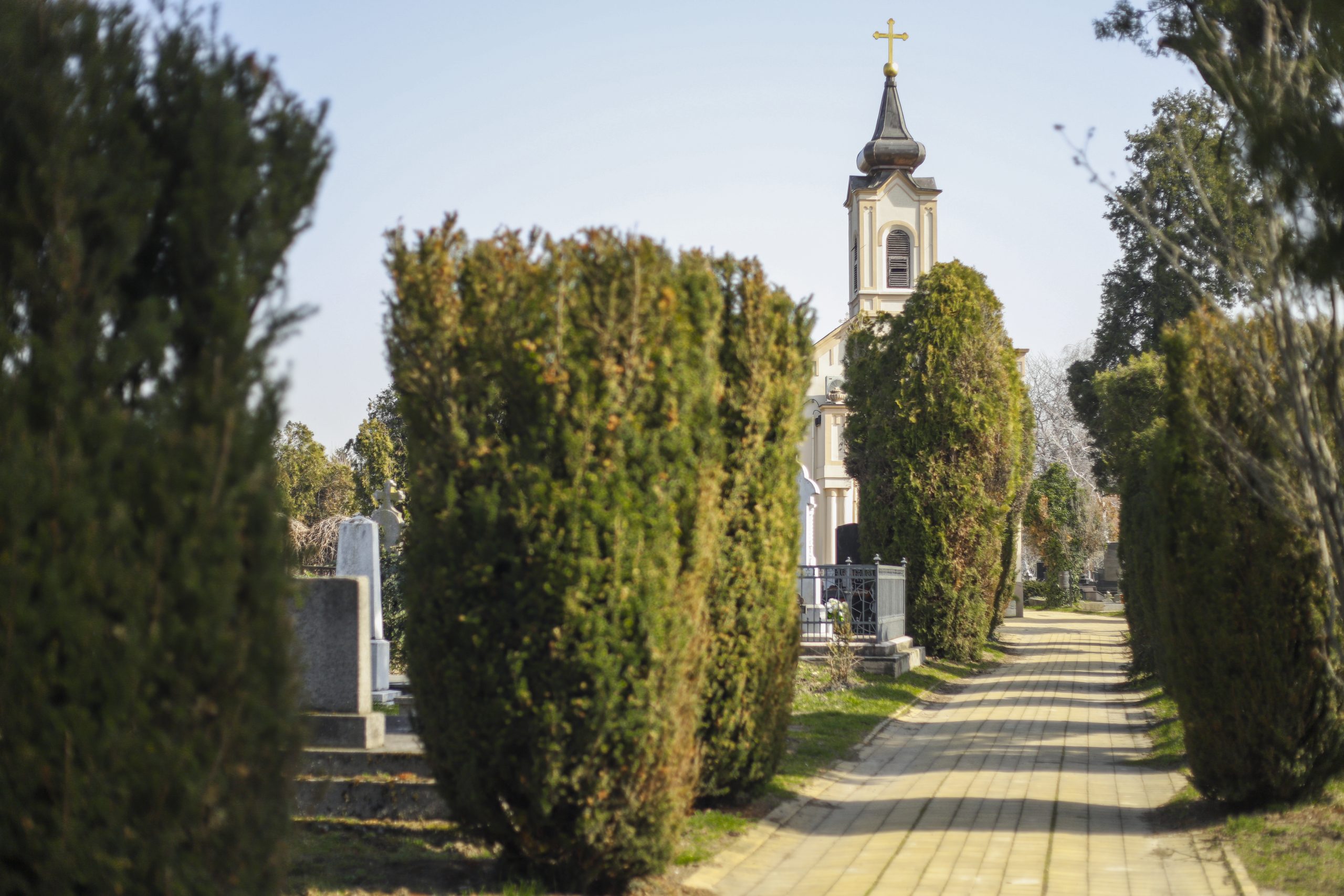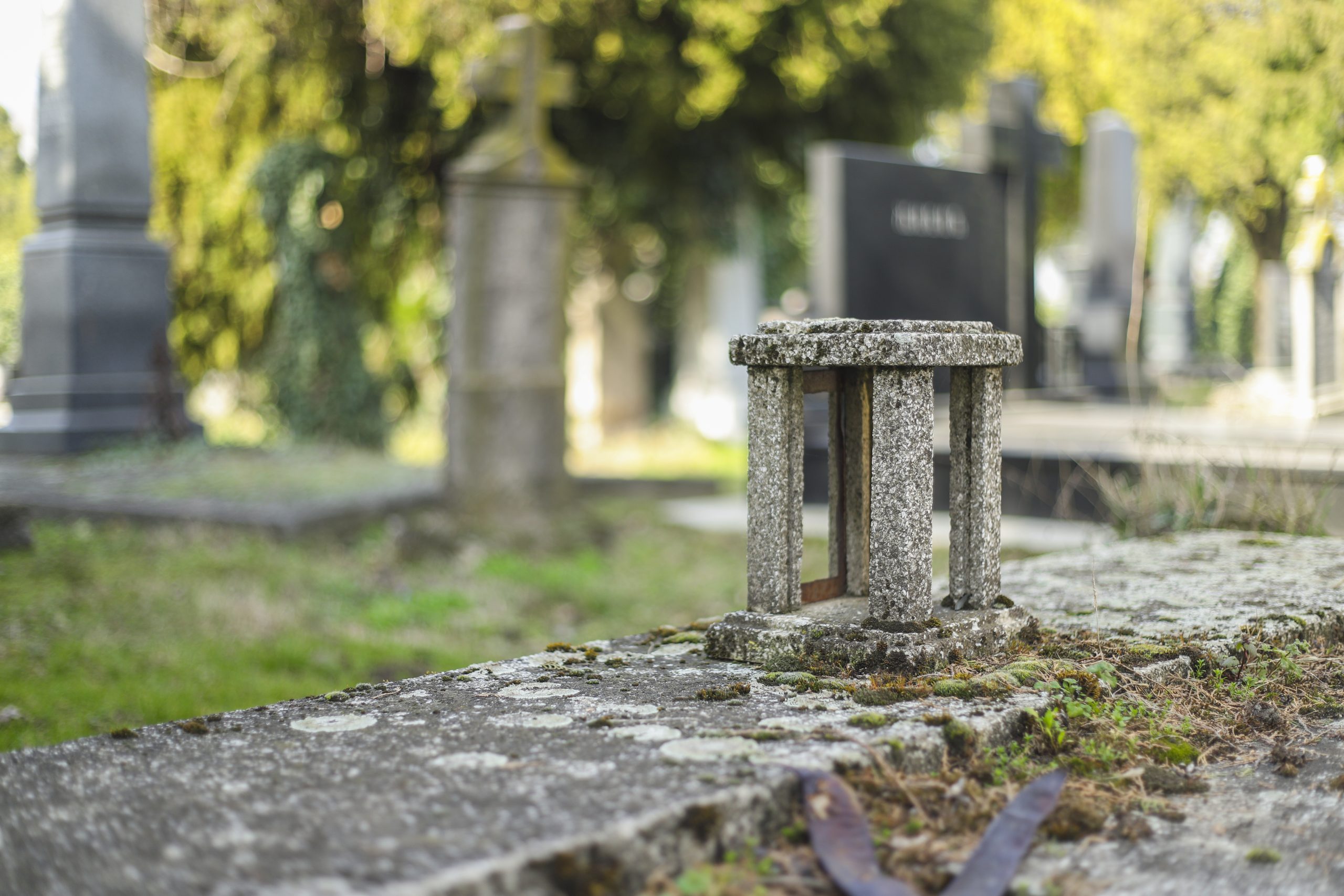Novi Sad cemeteries, protected cultural monuments, history witnesses and memory keepers – they hide many stories of the city’s history.
When he arrived at the railway station in Novi Sad, on 4 January 1890, Miša Dimitrijević couldn’t even imagine what kind of destiny awaited him. On Tucindan, an Orthodox holiday, a bloody fight happened. The owner and editor-in-chief of the Branik newspaper died on that day. Jaša Tomić swung his hunting knife, cutting Dimitrijević’s winter coat, blazer, shirt, undershirt and the aorta.
‘Is the train here yet? We must go,’ were Dimitrijević’s last words. He died shortly after on the railway platform.
Six weeks prior to Milica Miletić and Jaša Tomić’s marriage, she wrote to her first fiancé Branko Petrović, telling him to marry her as soon as possible. The shocking thing in this letter and the thing that also led to tragedy was Milica’s promise to Branko that she’ll make him the editor-in-chief of the Zastava newspaper. The engagement was called off soon after, and Jaša Tomić, as Milica’s husband, became chief editor. Milica’s letter stained Tomić’s career in politics and journalism. Both of them were the object of ridicule in Novi Sad and Zrenjanin. Before the tragedy happened, Tomić published a text called ‘To Shut Them Up’ because he wanted to deal with Dimitrijević publicly, inviting him to publish the letter in Branik. Dimitrijević didn’t publish it, but in his last article, in addition to his sharp response to Tomić, he invited the readers to come to the editorial board and read it. Angry and hurt, Tomić challenged Dimitrijević to a duel, but he declined it. On 4 January, on his way from work, Jaša Tomić spotted Dimitrijević driving in a fiacre with his wife. Tomić grabbed his hiršfenger, a bayonet, and started following them.
Miša Dimitrijević was buried on Christmas day in the Almaš Cemetery, one of the most beautiful and most interesting cemeteries, in terms of history. It is located in Peace Square and represents the eternal home to many important people, people that worked in the field of culture or science; professors, engineers, artists, as well as highly respected citizens of the merchant class. People had been buried in the Almaš Cemetery in the period from 1860 to 1974, when it was closed. The cemetery was proclaimed a cultural monument ten years later. The monument built to honor Miša Dimitrijević has artistic and architectural value. In addition to this monument, there are monuments dedicated to Pavle Simić, a great Serbian painter, Teodor Mandić, PhD, a publicist and a politician; there is a tomb for the famous composer Isidor Bajić, while the ktetor Platon Atanacković was buried in the crypt of the chapel of the Saints Peter and Paul.
Editor-in-Chief of Zastava for Over Three Decades
After what happened, Jaša Tomić was sentenced to life in prison, but the sentence was reduced to six years. Claiming Jaša only defended his wife’s honor, the women of Novi Sad gathered three thousand signatures to free him. Mrs. Amalija Stratimirović led the deputation. As Lazar Rakić stated in his book Jaša Tomić (1856 – 1922), Jakov Jaša Tomić was a talented journalist and publicist. At the time, Serbs had more literate journalists than Jaša, but he stood out as the grandstanding one. The opposers admitted the fact that Jaša used demagogy to influence people. The Balkan Wars were extremely significant events in Tomić’s biography. With his reports from the front lines, he caused great excitement and enthusiasm in Serbs who lived in the Kingdom of Hungary, giving hope to Serbia that the national question would finally be resolved. At the beginning of World War I, he was arrested and tortured, which worsened his already poor health. During his work in the Assembly in Novi Sad, Tomić advocated the direct unification of Vojvodina and the Kingdom of Serbia in 1918, which opposed the ideas of certain politicians who thought of merging Vojvodina and the Kingdom of Serbs, Croats and Slovenes through Zagreb.
Jaša Tomić died on 22 October 1922 and was buried in the Uspensko Cemetery, located in Novosadskog Sajma Street. Besides the monument dedicated to Jaša Tomić, the cemetery encompasses numerous architecturally interesting monumental tombstones, as well as a couple of tombs of notable people who contributed to the political, social and cultural history of Novi Sad. There are also monuments to the members of the White émigré who moved to Novi Sad after the October Revolution in 1917, with epitaphs written mainly in Russian. The epitaphs, as well as personal destinies of those who passed away, are particularly interesting. Just like other historical cemeteries, the Uspensko Cemetery was active until 1974. It was opened for burials again in 1991, but under special circumstances only.
To paraphrase the famous poet Jovan Jovanović Zmaj, it’s better for the ideals to bury their people than for people to bury their ideals
When Miša Dimitrijević declined the duel, Jaša Tomić bought two knives, but he threw them away at Jovan Jovanović Zmaj’s suggestion. Zmaj was a dear friend of the Miletić family, he was also Milica’s father, Svetozar Miletić, best man. Unfortunate circumstances brought them together. Zmaj had five children, all five of them died, including the adopted daughter, while Miletić also lost four of his own. Zmaj was Miletić’s dearest and most loyal friend, Zmaj never left his side.
Alongside numerous works, the poetry books Đulići and Đulići uveoci marked Zmaj’s life. The first one talks about the happy life, the second talks about the pain you feel for those you love the most. The death of his sons Mirko, Sava and Jug, daughters Tijana and Smilja, changed the poet’s life forever. His wife Ruža couldn’t stand the pain, she died shortly after. Jovan Jovanović Zmaj marked the time he lived in with everything he did and achieved; he was the initiator of children’s poetry, member of the Serbian Royal Academy of Sciences, part of the board of directors of the Serbian Radical Party, honorary doctor of the Pest University, editor of newspapers Neven and Zmaj. On 12 June 1904, he turned 70 and died two days later. Upon his wish, the funeral was modest. There was an ordinary wooden coffin with ‘Čika Zmajova’ engraved on it. He was buried in Sremska Kamenica, in the Kameničko Cemetery (sr. Kameničko groblje) which encompasses both the Orthodox and Catholic cemeteries. People from Sremska Kamenica probably used to have cemeteries in the old village of Mala Kamenica, dating back to the Ottoman Empire. Based on the preserved monuments, it is believed that the current cemetery was built in the 18th century. In addition to Zmaj, the painter Novak Radonić was also buried in this cemetery.
Cemeteries are proof of life, not desolation – nine protected burial grounds in Novi Sad
In addition to the Almaš and Uspensko cemeteries, Avijatičarsko, Jevrejsko (en. Jewish Cemetery), Rusinsko (en. Ruthenian Cemetery), Nazarensko (en. Nazarenes Cemetery), Reformatorsko i Evangelističko (en. Reformed and Evangelical cemeteries), Nemačko (en. German Cemetery) and Roman Catholic Cemetery are also proclaimed cultural monuments.
The military or aviation cemetery (sr. Avijatičarsko groblje) was formed in 1923 when the Ikarus aircraft factory was founded in Novi Sad. Burials in this cemetery stopped and the plot was ceded to the Catholic cemetery. Few monuments have been preserved; among them are monuments to the airmen of the First Airborne Regiment who lost their lives while performing their military duty – Srećko Šetnik, Vjekoslav Nikoljačić, Ludvig Demaroš and Ive, whose last name remained unknown.
The Jewish cemetery is located in Doža Đerđa Street. It was built at the beginning of the 19th century, and was closed down in 1974, only to be reopened for burials after ten years. Before this one, there used to be two Jewish cemeteries in Novi Sad. The first cemetery was located on the corner of Mihajlo Pupin Boulevard and Kralja Aleksandra Street. It was built in 1717 and closed in 1749. After that, the Jews were buried in the cemetery in Aleksa Šantića Street, and since the last century in Doža Đerđa Street again. There are family monuments of special artistic and architectural value. There is a very valuable monument to the victims of fascist terror as well. The Jewish cemetery is under the protection of the Institute for Protection of Cultural Monuments of Novi Sad.
here is a Ruthenian or Greek Catholic cemetery on Kralja Petra Boulevard I, encompassing 650 graves. It was formed in 1860 and put out of use in 1974, as was the Jewish one. The teacher and prominent Ruthenian educator Osif Fa (1882 – 1971) and the famous priest and writer Jovan Hranilović (1855 – 1924) were buried in this cemetery.
The Nazarenes Cemetery is located in Kisački put. Judging by the small number of preserved monuments, the cemetery was built in the 19th century, and was closed in 1974. It was protected, like all old cemeteries, in 1984, by the Institute for the Protection of Cultural Monuments. It was then decided that no burials should be held in this cemetery, but that urns could be laid.
Reformed (Calvinist) and Evangelical Cemetery is placed within the Catholic Cemetery, separated from the Roman Catholic one by a triumphal arch and has five thousand burial places. It was built in 1860 and closed in 1974. After ten years, it was placed under the protection of the Institute for the Protection of Cultural Monuments. Here lie the priest, publicist and historian of Novi Sad, Gabriel Belohorski, lawyer and politician Mikloš Krno, PhD, teacher Andrej Laco, writer and pedagogue Janoš Nemešanji, doctor, founder of the Pasteur Institute and world-famous radiologist doctor Adolf Hempt, as well as the Honved colonel Friđeša Šnajder, whose family is the oldest German family in Novi Sad.
At the complex of the Catholic Cemetery in Novi Sad, which is located on the stretch of Futoška Street and Vojvode Knićanina Street, there is a German Cemetery as well. There is a common grave in this cemetery, in which the remains of 33 German soldiers rest. In 2007, according to the Program of Revitalization of All Old Cemeteries taken care of by the JKP Lisje, works were carried out under the supervision of the Institute for the Protection of Cultural Monuments.
The Roman Catholic Cemetery was built in 1860. It is located in Futoška Street, across from Jodna Banja, a spa resort. No funerals were held at the Catholic Cemetery since 1974. In 1991, this cemetery was also reopened for burial. The chapel at the Roman Catholic Cemetery was built in 1875, as an endowment of Elizabeth and Leopold Guker, which is noted on the medallion above the entrance portal. This cemetery is home to a large number of famous people of the Roman Catholic, Evangelical and Reformed faiths, who were important for the history of Novi Sad. Some of them include the great župan Feliks Parčetić, Hungarian officer and nobleman Mikloš Estergomi, doctor and nobleman Dr. Vilmoš Vilt, one of the founders and first manager of Jodna Banja in Novi Sad. There is also the tomb of the Grosinger family, famous Novi Sad pharmacists. In addition to these magnificent monuments, a large number of graves of prominent persons from various spheres of culture, art, education and sports have been put under the protection as well.
With his poetry, Zmaj reminds us that life and death are inseparable, as we wouldn’t be here if it wasn’t for our ancestors.
Cemeteries represent the eternity and the perseverance of a nation, as well as the memory of good and brave people who must not fall into oblivion. Cemeteries write history. They connect tradition and collective spirit, they connect the past, the present and the future. They are not places of darkness.
Author: Gala Gajin
Photo: Uroš Dožić











